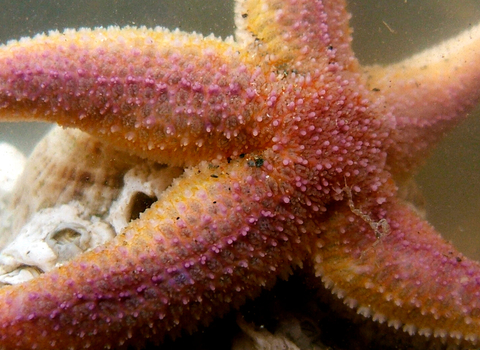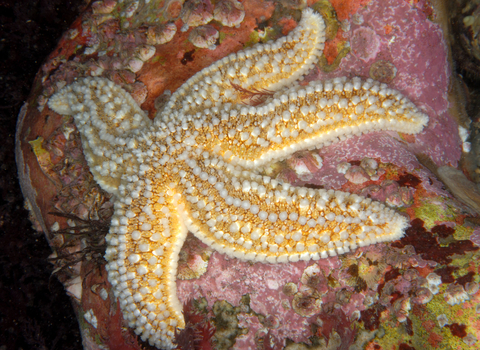
Starfish by Alan Price

Common Starfish ©Paul Naylor www.marinephoto.co.uk
Common starfish
A most familiar seashore inhabitant, the common starfish truly lives up to its name in UK seas and rockpools!
Scientific name
Asterias rubensWhen to see
January to DecemberSpecies information
Category
Statistics
Diameter: 10-30cm Average Lifespan: 5-10 yearsCommon
About
The common starfish is highly common in UK seas, found in rockpools and out at sea to depths of at least 600m. They are active predators, feasting on bivalves such as mussels and clams. As such, they have been known to become a bit of a pest on mussel and oyster beds! Starfish feed on shellfish by pulling the shells open with their arms, inserting their own stomach into the shell and dissolving their prey with digestive juices, before reabsorbing their stomach full of the shellfish soup.Starfish will form huge aggregations when food is plentiful, drawn in by their keen sense of smell. They don't have a nose - they use special receptors in their skin!. Starfish aren't really fish, they are a type of sea creature called an echinoderm, which means "spiny skinned". Echinoderms includes starfish, sea urchins, sea cucumbers and brittlestars.
